On exhibition-making: When was the last time we ate?
by Akmalia Rizqita ‘Chita’

The clock shows 01.11. It’s way past midnight. Fourteen hours and forty nine seconds until the opening of the exhibition.
Out of nine participating artists, only five works are already installed in their designated places. One is missing its screws. One, we still cannot figure out why the sound doesn’t come out the way we want it to. One is being argued, as the space does not allow us to exhibit it the way the work was designed—we are not permitted to drill the ceiling! And the other one, hasn’t even arrived. The art handlers need to go home soon, considering they have been working with us for more than eight hours… Have they even eaten dinner? Wait, when was the last time we ate? As if we haven’t got enough on our plates, five hundred sheets of mini catalogues have been printed, but we just found out that one of the artists’ names is mistyped… Do we need to print them all over again? With our limited budget and so limited time? In such circumstances, feelings of worry or even panic are bound to be present, but it is not problem-solving to point fingers or put the blame on anyone. We just keep working, as something inside all of us knows, that everything will work out in the end. Somehow. That’s just the magic of exhibition-making that we’d like to believe.
Everyone is already exhausted and sleepy. We decided to call it a day. “See you then!” Mind you, it’s not “see you tomorrow”, since we know we will see each other again in just a few hours anyway. After little sleep, quick showers, round trips to nearby printing shops and hardware stores, coffee takeouts, the exhibition finally starts to take shape. That one media work is still being tinkered, but that’s just how media works are? Technology! Time flies so much faster. Before we know it, it’s only twelve minutes until the public opening hour, and a few guests are already arriving. They’re trying to take a peek inside the exhibition space, and yet still keep their distance, as they’re not sure we’re ready—in fact, we’re not. They can see that the floors are still being swept. Before opening the entrance door, we give the space one last look, to make sure that there are no traces of tapes lying around. Looks like we’re good! But we need to greet the guests and listen to the opening speech before we can finally have our late lunch.
The scenario above is compiled out of several different experiences and settings, which makes it partly true, partly fiction. Perhaps such a scenario sounds familiar to all exhibition makers—although I sincerely hope you never had it that badly at once. Certainly we will not find such ‘behind the scene’ stories written in the introduction or the curatorial text that is usually pasted near the entrance, not to mention the catalogue. At the end of the day, the question raised will be; what do the artworks mean, what kind of message are they trying to convey, the background story of the artists, its relation to the social political context of the time, etc. But one rarely asks how the exhibition come to be in the first place. You can find similar manners in other disciplines, specifically in the creative industries, music, for example. “Let the artists be the artists. We‘re okay with being in the background” said Shellback, a Swedish producer and songwriter in the Netflix documentary titled This is Pop: Stockholm Syndrome (2021), directed by Jared Raab.
It is not about being present on the (front) stage… I believe that we linger the same question; what about a better backstage? A backstage that is pleasant for every role that is involved in the process of exhibition-making, be it artists, curators, writers, art handlers, managers, researchers, cleaning services, and the public… There’s a Javanese saying that I just learnt recently that keeps ringing in my head: Nguwongke uwong. It literally translates into memanusiakan manusia, or to humanize humans. In everyday context, I understand it as a way of respecting, tolerating, and working with other people. After all, exhibitions are made by people, for people. What if we acknowledge that each of us have the means to make things better and easier for anyone that is working with us? Despite having our own assigned task to each of our roles, don’t we have shared responsibilities in making the exhibition actually happen? Perhaps we can try to not get used to such scenarios above, and make better exhibitions, by being mindful with everyone involved?
This text is part of [Conversation] — a series of posts on exhibition-making from the Jakarta Biennale 2021 ESOK curatorial team.
Akmalia Rizqita (b. Jakarta, 1996) or better known as ‘Chita’, currently lives and works in between Jakarta and Bandung, Indonesia. She’s particularly fond of organizing and taking care of things in her surroundings—be it space, research projects, and exhibitions. Recently, she participated in Hong Kong’s Para/Site 2020 Workshops for Emerging Arts Professionals. Since it’s inception in 2018, she’s been the project manager of RUBANAH Underground Hub. Currently, she is one of the curatorial assistants of JB2021 ESOK.
